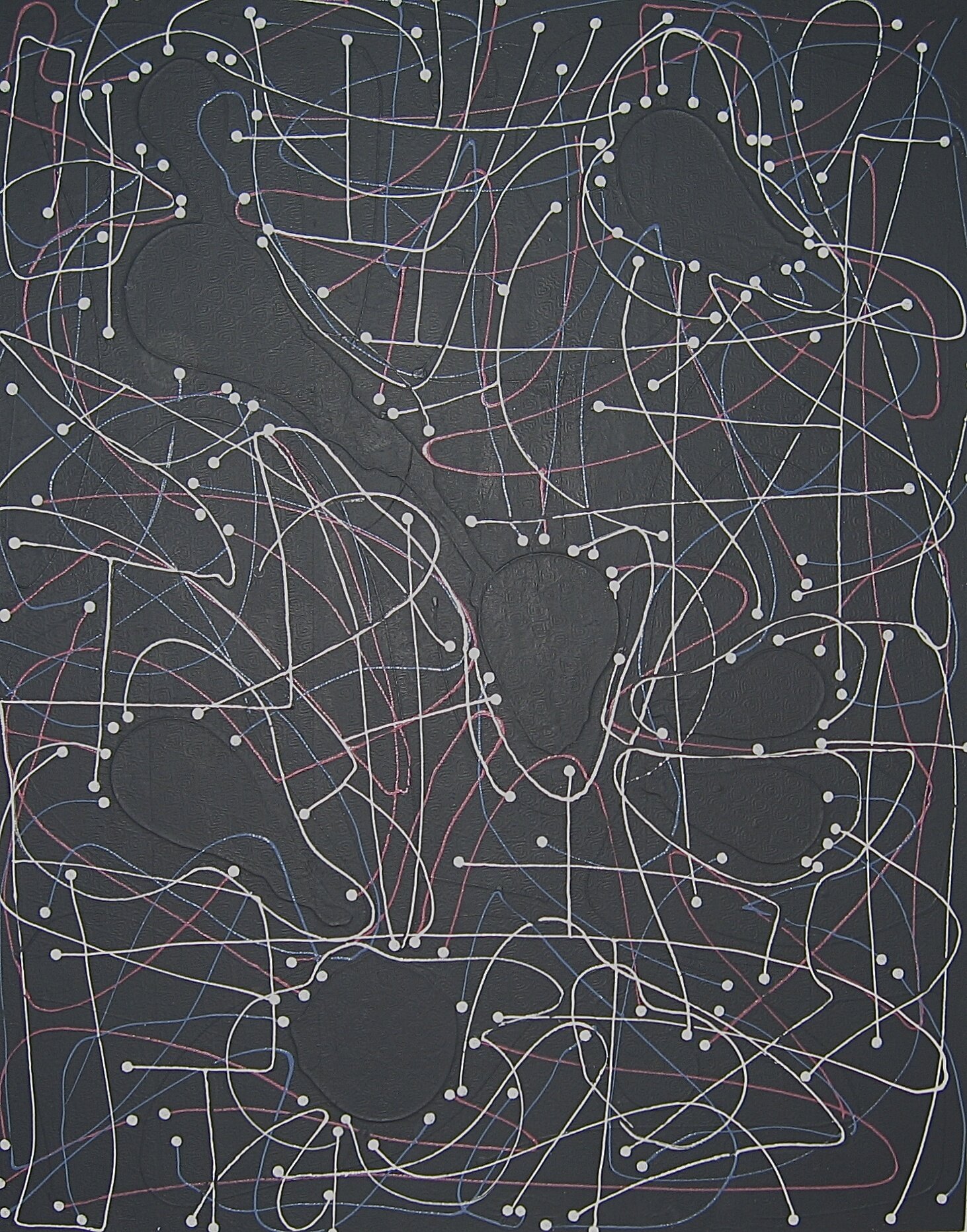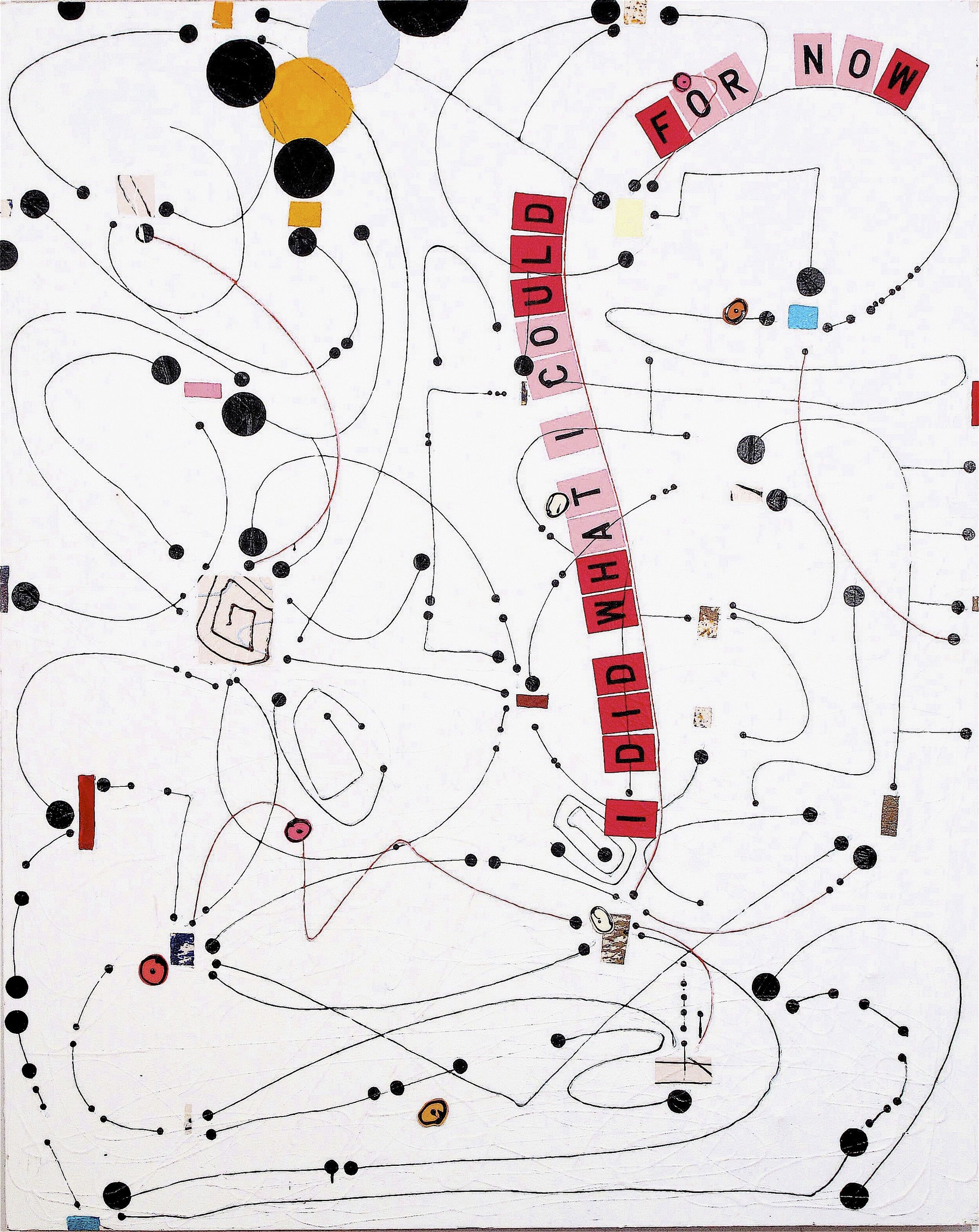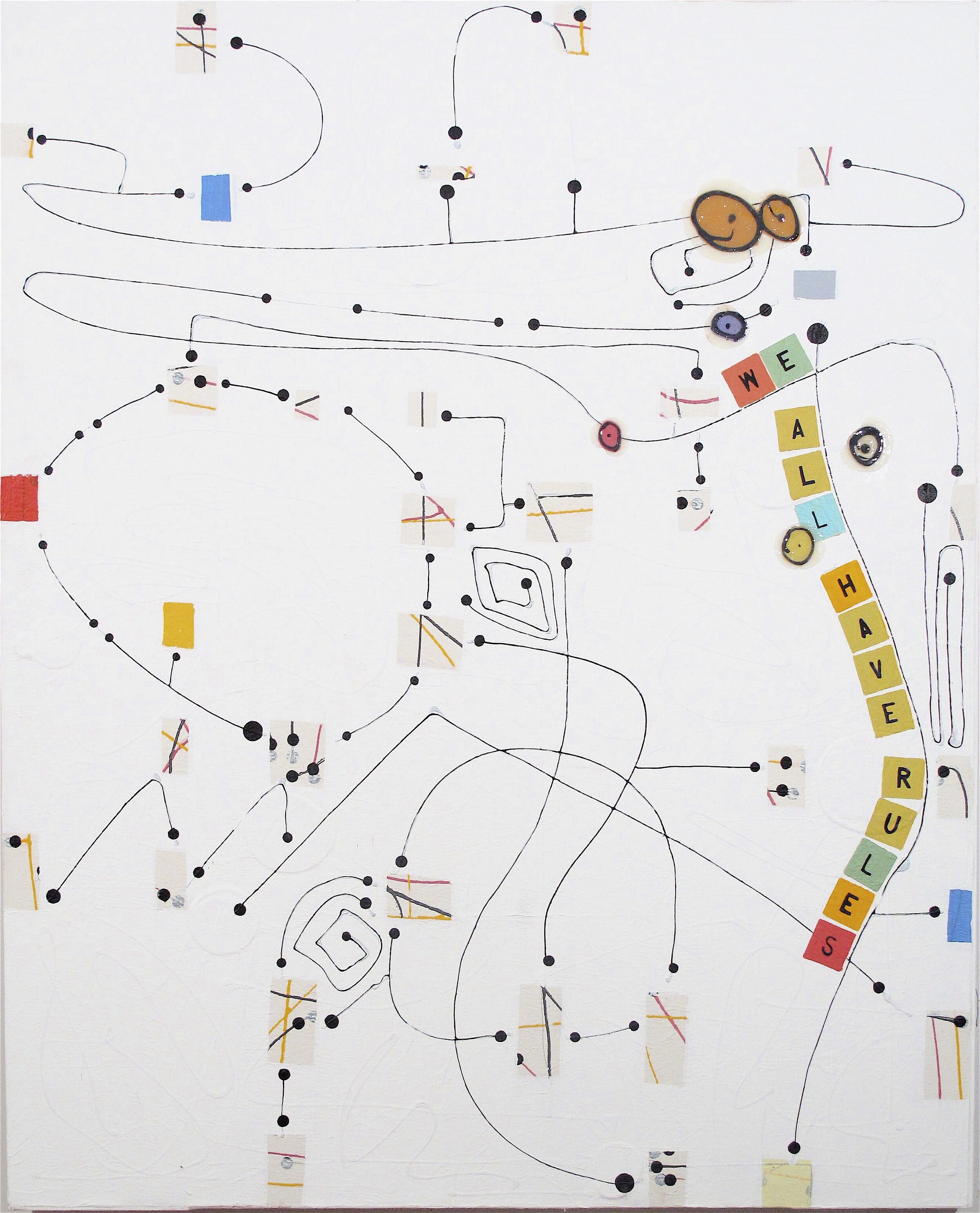DAVID CRAVEN
David Craven, A Young Brooklyn Thug, 2012, Acrylic, gel and mixed media on canvas, 72 x 54 in.
David Craven was born in London, Ontario in 1946. He graduated from the University of Western Ontario in 1969 and the Ontario College of Art in Toronto in 1973. During his college years he was a competitive gymnast which would be echoed in the loops and swirls of his later paintings.
In the 1970s Craven’s work was rooted in abstraction. At this time the canvases featured a pared down palette of black and white over aluminum. He became well known in Canada for large works on canvas that featured curvilinear lines atop painterly backgrounds. By the turn of the decade Craven was making folded canvas paintings that veered into the sculptural realm.
Craven moved to New York in the early 1980s and took residence above the infamous bar 211 in Tribeca. He became part of a social circle that included artists David Diao, Stephen Ellis and Jack Willis. During this era Craven’s practice evolved into figuration. A series of heads painted in acrylic on canvas are illustrative of this transition from abstract to figurative work. In these large canvases long strokes of color – white, pink, black – are painted in repetitive concentric lines forming heads, which are barely legible and almost subsumed into the painted patterns. They prefigure the networks of lines and dots that Craven turns to in the later abstract series.
In the 1990s Craven and his wife Myra moved upstate to Cambridge New York. While upstate a smaller studio—a converted barn outfitted with a full workshop—resulted in masterful diminutive works and a return to abstraction. His daily routine included reading the NY Post in blue collar bars over lunch and a couple of drinks before retiring to the studio to work all afternoon. The phrase snippets appearing in his late abstractions were appropriated from The Post and episodes of Craven’s favorite television program Judge Judy.
Craven’s line and dot abstractions flourished throughout the 2000s. Along with the appropriated text from popular media and utilizing a bright palette he further explored the notion of what the structure of a painting could be, both literally and conceptually. The final decade of his work showed the application unconventional medias – urethane, foam, etc– and the embedding of objects—marbles, rubber nipples—under the surface in the painting, resulting in visible protrusions in the canvas.
Craven showed with Gerald Sable (Sable-Castelli) in Toronto for over thirty years. His last shows in New York were with Anna Kustera. He died in 2016 and is survived by his widow Myra.
Craven has had solo exhibitions across North America, in cities including Calgary, Toronto, Montréal, New York, Atlanta, Victoria, and Edmonton. His work is included in the collections of the National Gallery of Canada, the Art Gallery of Ontario, the Montréal Museum of Fine Art, the Vancouver Art Gallery as well as numerous private collections in Canada and the US. His work has been featured in several monographic publications as well as Time Magazine Canada, Parachute, The New York Times, Art in America, Canadian Art, Bomb and Flash Art.




